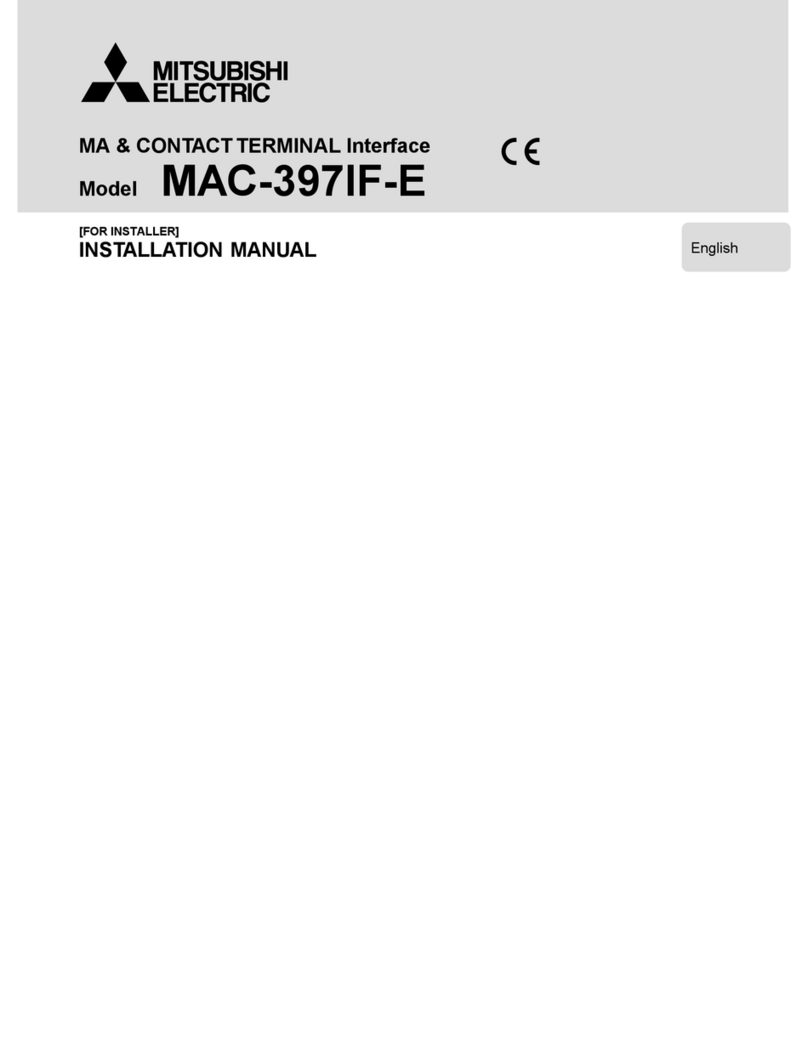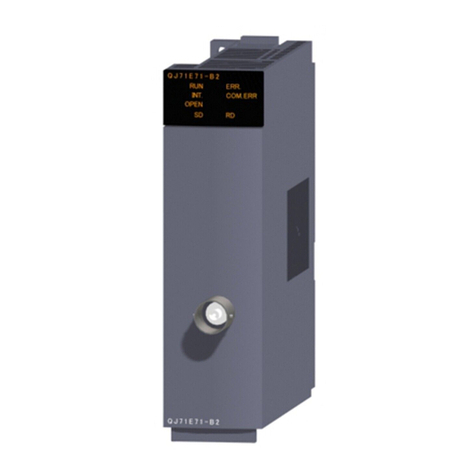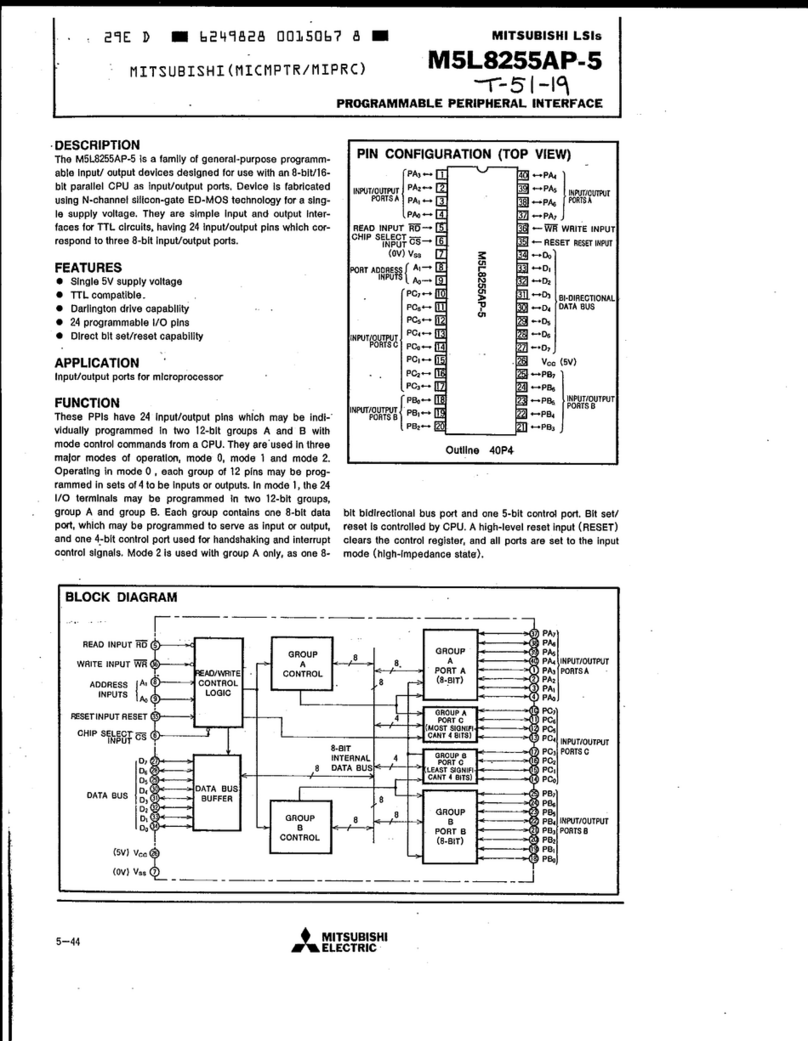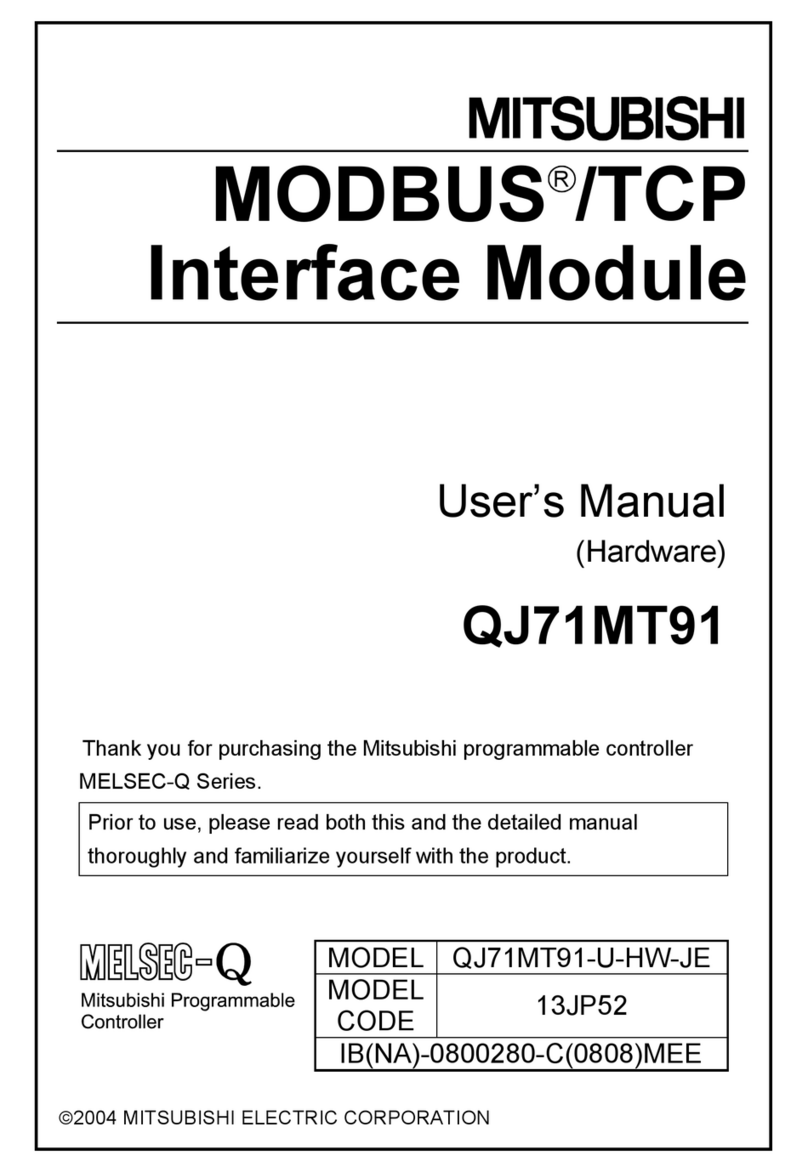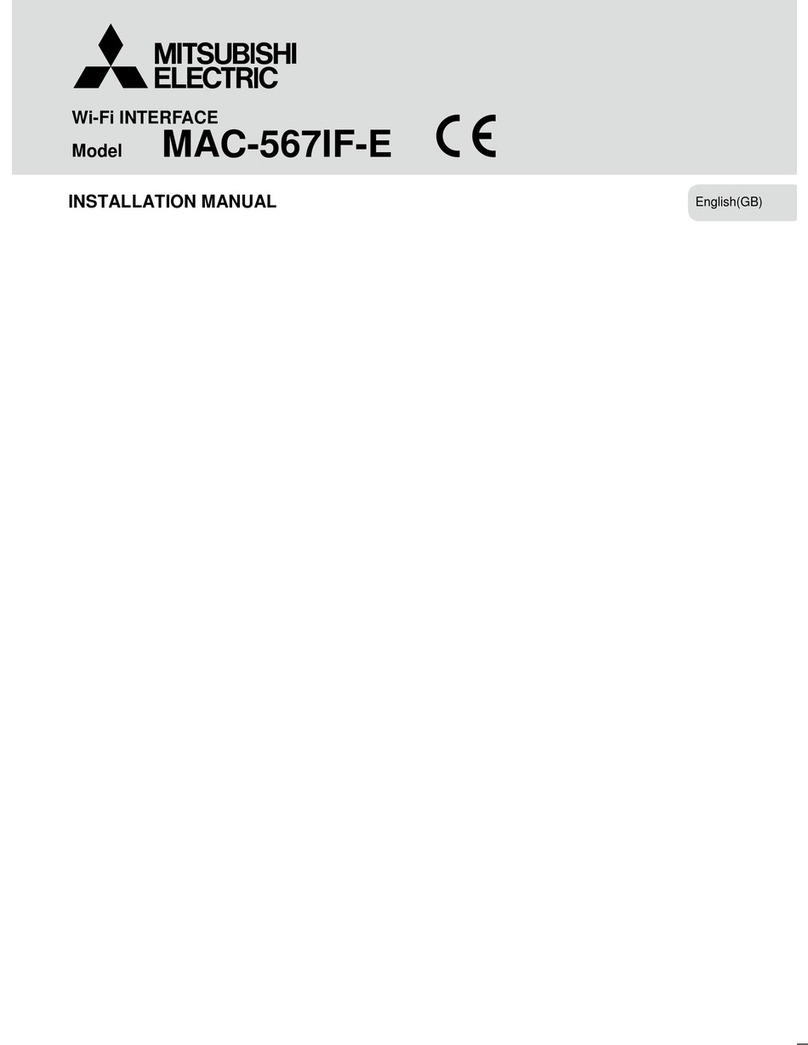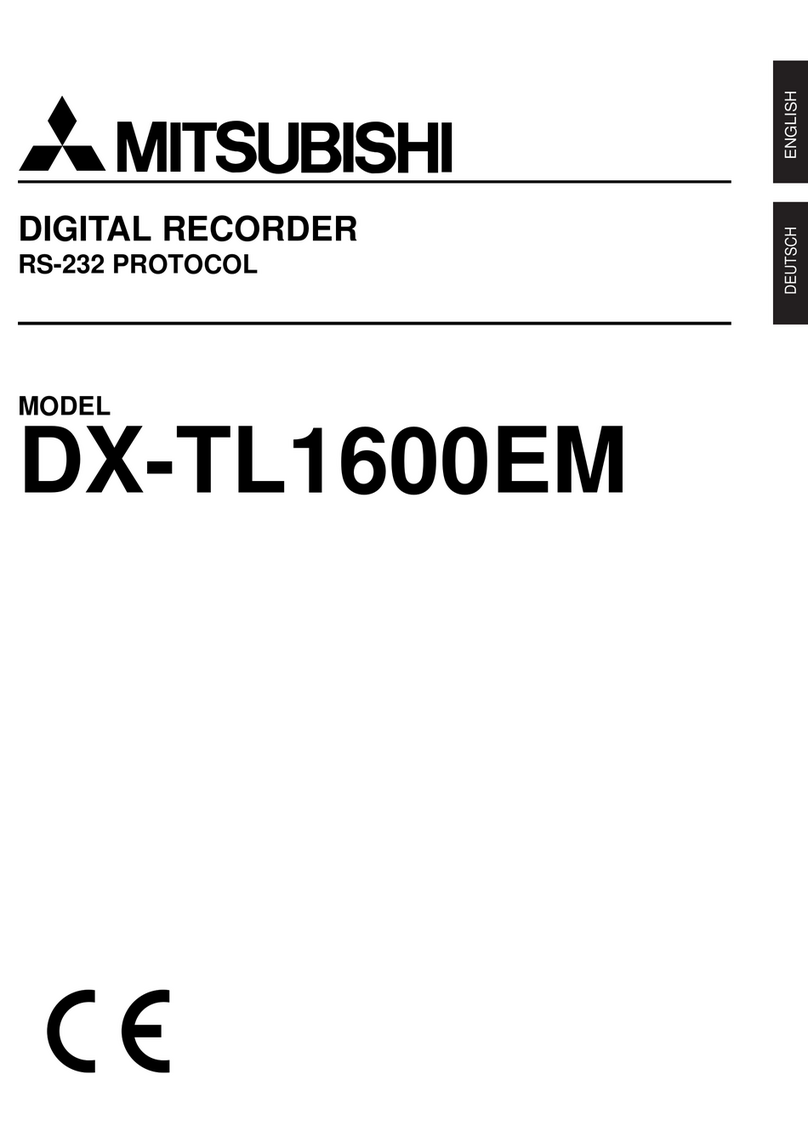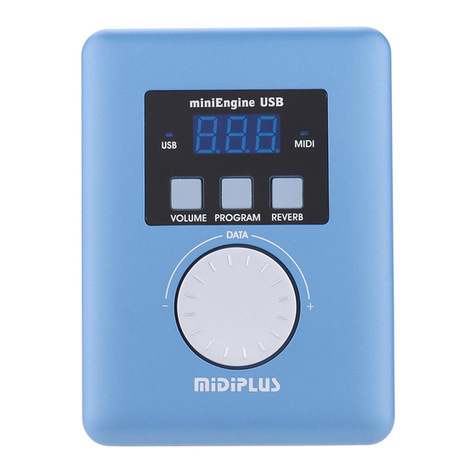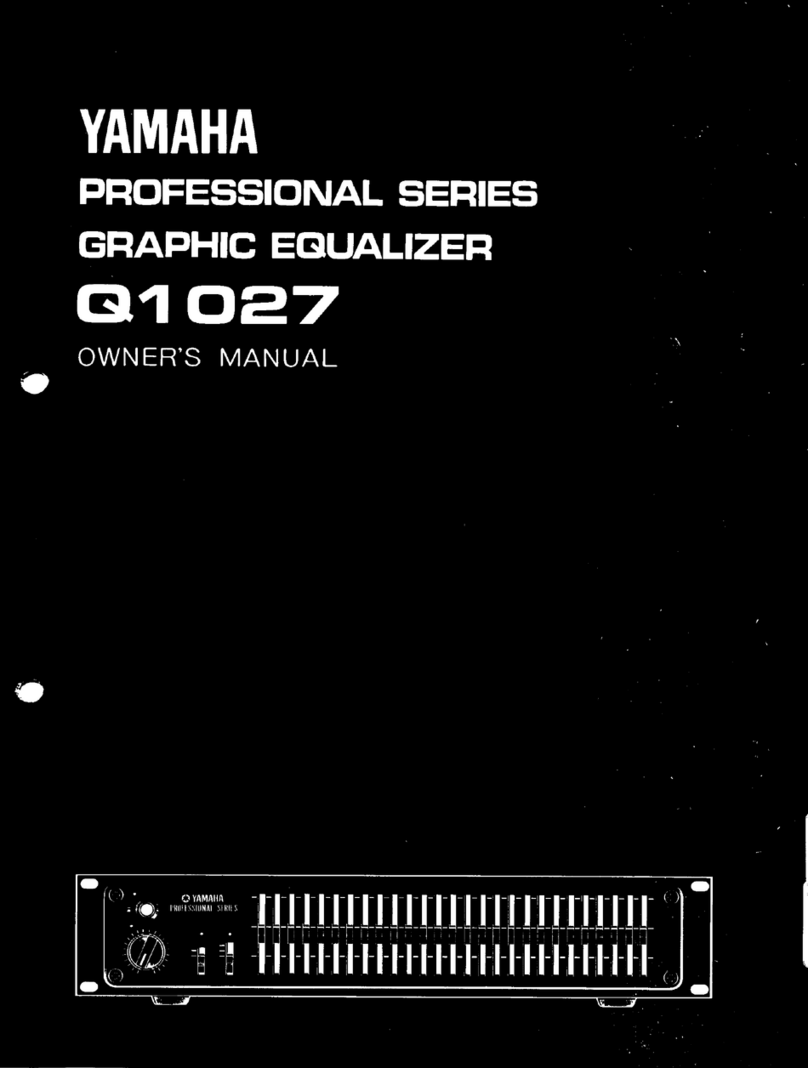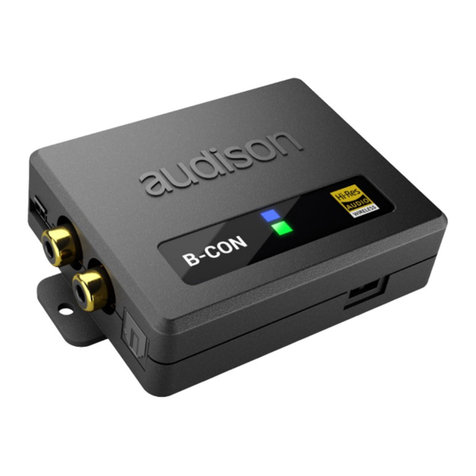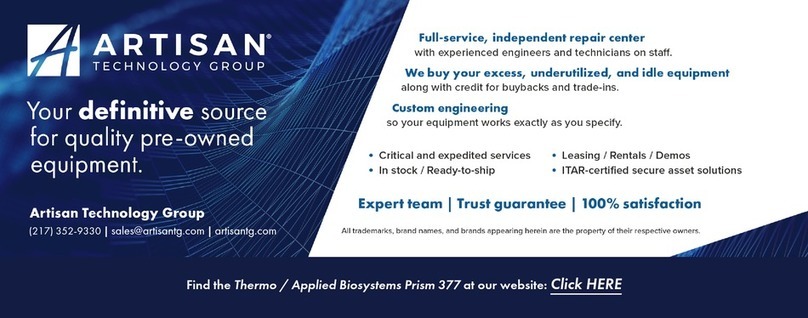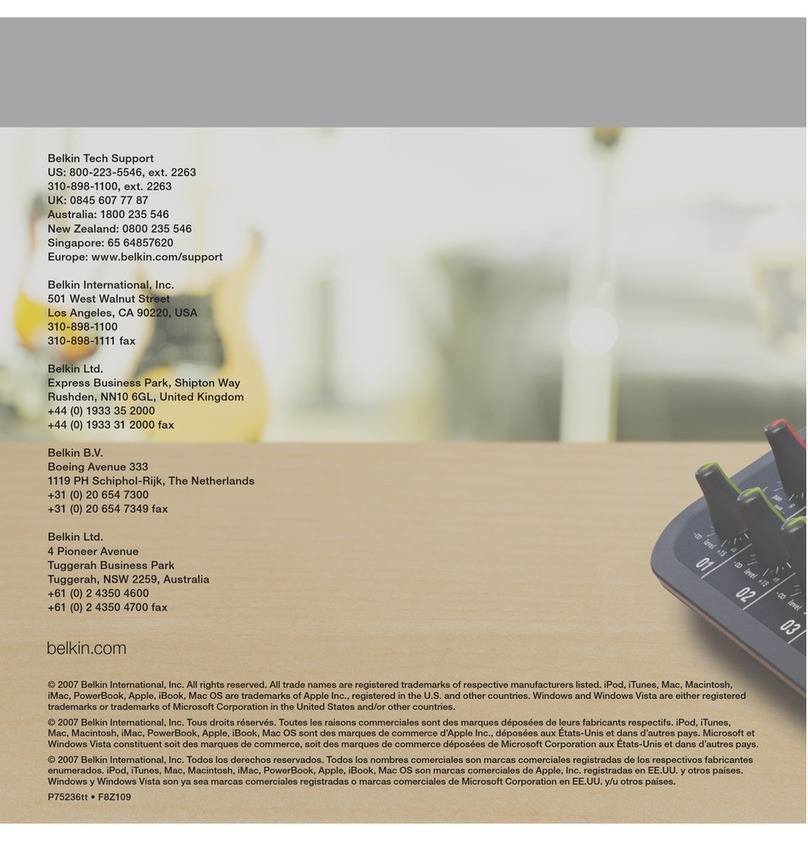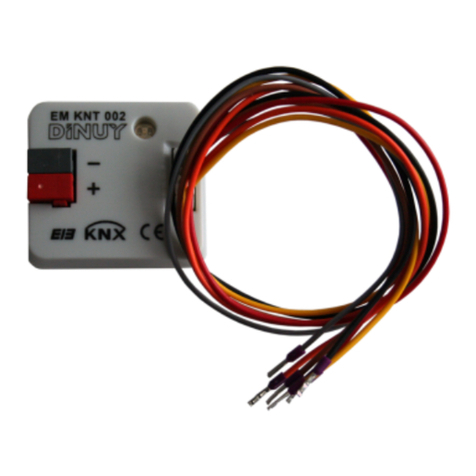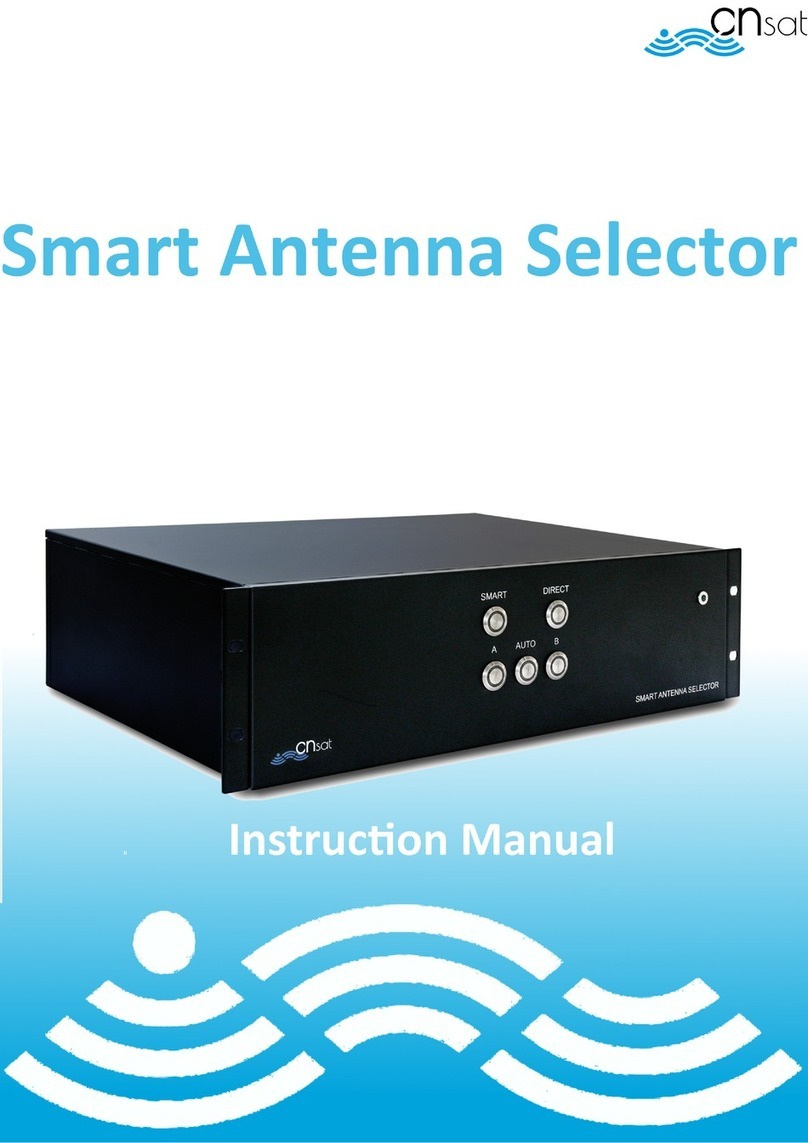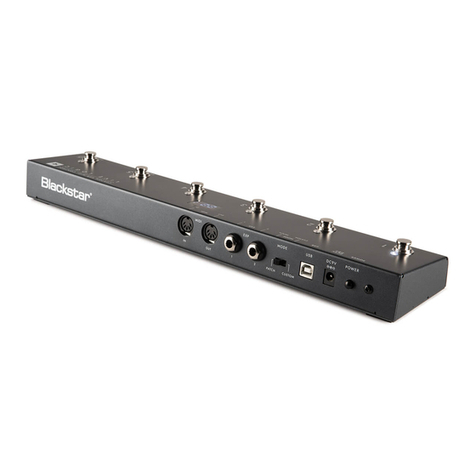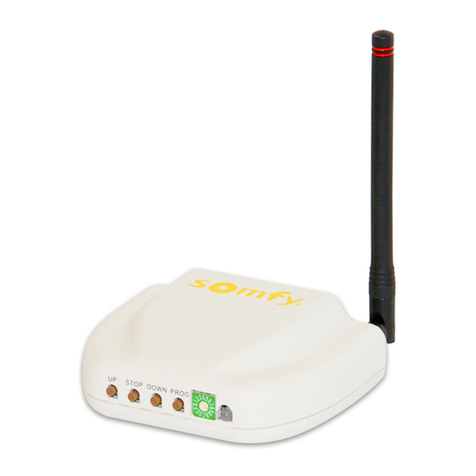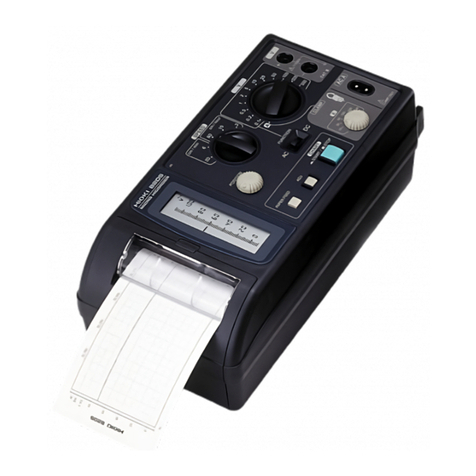Mitsubishi MR-J2-10A Installation instructions

General-Purpose AC Servo
J2
General-Purpose Interface
MR-J2- A
Specifications and Installation Guide
Series
D

– 1 –
Thank you for choosing this Mitsubishi AC servo. This Installation guide gives handling information
and precautions for using the servo amplifier and servo motor. Incorrect handling may cause an
unexpected fault. Before using the servo amplifier and servo motor, please read this Installation
guide carefully to use the equipment to its optimum.
Please forward this Installation guide to the end user.
Safety Instructions
Do not attempt to install, operate, maintain or inspect the servo amplifier and servo motor until
you have read through this Installation guide and appended documents carefully and can use
the equipment correctly. Do not use the servo amplifier and servo motor until you have a full
knowledge of the equipment, safety information and instructions.
In this Installation guide, the safety instruction levels are classified into "WARNING" and "CAU-
TION".
Indicates that incorrect handling may cause hazardous conditions,, result-
ing in death or severe injury.
Indicates that incorrect handling may cause hazardous conditions,, result-
ing in medium or slight injury to personnel or may cause physical damage.
Note that the CAUTION level may lead to a serious consequence according to conditions. Please
follow the instructions of both levels because they are important to personnel safety.
What must not be done and what must be done are indicated by the following diagrammatic
symbols:
: Indicates what must not be done. For example, "No Fire" is indicated by .
: Indicates what must be done. For example, grounding is indicated by .
After reading this installation guide, always keep it accessible to the operator.
WARNING
CAUTION
In this Installation guide, instructions at a lower level than the above, instructions for other
functions, and so on are classified into "NOTICE", "INFORMATION" and "MEMORANDUM".
Indicates that incorrect handling may cause the servo amplifier to be faulty and may
not lead to physical damage.
Indicates that parameter setting change, etc. will provide another function or there
are other usages.
Indicates information needed for use of this equipment.
NOTICE
INFOR-
MATION
MEMO-
RANDUM

– 2 –
Before wiring or inspection, switch power off and wait for more than 10 minutes. Then,
confirm the voltage is safe with voltage tester. Otherwise, you may get an electric shock.
Connect the servo amplifier and servo motor to ground.
Any person who is involved in wiring and inspection should be fully competent to do the
work.
Do not attempt to wire the servo amplifier and servo motor until they have been installed.
Otherwise, you may get an electric shock.
Operate the switches with dry hand to prevent an electric shock.
The cables should not be damaged, stressed loaded,, or pinched. Otherwise, you may get
an electric shock.
Do not install the servo amplifier, servo motor and regenerative brake resistor on or near
combustibles. Otherwise a fire may cause.
When the servo amplifier has become faulty, switch off the main servo amplifier power
side. Continuous flow of a large current may cause a fire.
When a regenerative brake resistor is used, use an alarm signal to switch main power off.
Otherwise, a regenerative brake transistor fault or the like may overheat the regenerative
brake resistor, causing a fire.
SAFETY INSTRCUTIONS
1. To prevent electric shock, note the following:
WARNING
2. To prevent fire, note the following:
CAUTION
3. To prevent injury, note the following:
Only the voltage specified in the Installation guide should be applied to each terminal,,
Otherwise,, a burst,, damage,, etc. may occur.
Connect the terminals correctly to prevent a burst,, damage,, etc.
Ensure that polarity (+, -) is correct. Otherwise, a burst, damage, etc. may occur.
During power-on or for some time after power-off, do not touch the servo amplifier fins,
regenerative brake resistor, servo motor, etc. Their temperatures may be high and you
may get burnt.
CAUTION

– 3 –
4. Additional instructions
The following instructions should also be fully noted. Incorrect handling may cause a fault, injury,
electric shock, etc.
(1) Transportation and installation
Transport the products correctly acordng to their weights.
Stacking in excess of the specified number of products is not allowed.
Do not carry the motor by the cables, shaft or encoder.
Do not hold the front cover to transport the controller. The controller may drop.
Install the servo amplifier in a load-bearing place in accordance with the Installation guide.
Do not climb or stand on servo equipment. Do not put heavy objects on equipment.
The controller and servo motor must be installed in the specified direction.
Leave specified clearances between the servo amplifier and control enclosure walls or
other equipment.
Do not install or operate the servo amplifier and servo motor which has been damaged or
has any parts missing.
Provide adequate protection to prevent screws and other conductive matter, oil and other
combustible matter from entering the servo amplifier.
Do not drop or strike servo amplifier or servo motor. Isolate from all impact loads.
CAUTION

– 4 –
Use the servo amplifier and servo motor under the following environmental conditions:
Securely attach the servo motor to the machine. If attach insecurely, the servo motor may
come off during operation.
The servo motor with reduction gear must be installed in the specified direction to prevent
oil leakage.
For safety of personnel, always cover rotating and moving parts.
Never hit the servo motor or shaft, especially when coupling the servo motor to the ma-
chine. The encoder may become faulty.
Do not subject the servo motor shaft to more than the permissible load. Otherwise, the
shaft may break.
When the equipment has been stored for an extended period of time, consult Mitsubishi.
CAUTION
Servo Amplifier
Environmen Conditions Servo Motor
Ambient
temperature
Ambient humidity
Storage humidity
Ambience
Altitude
Vibration
Storage
temperature
0 to +55 (non-freezing)
32 to 131
(non-freezing)
90%RH or less
(non-condensing)
-20 to +65
(non-freezing)
-4 to 149 (non-freezing)
90%RH or less (non-condensing)
Indoors (no direct sunlight)
Free from corrosive gas, flammable gas, oil mist, dust and dirt
Max. 1000m (3280 ft) above sea level
5.9 (0.6G) or less
19.4 or less
[
°
C]
[
°
F]
[
°
C]
[
°
F]
[m/s
2
]
[ft/s
2
]
0 to +40 (non-freezing)
32 to 104
(non-freezing)
80%RH or less
(non-condensing)
-15 to +70
(non-freezing)
5 to 158 (non-freezing)
MC-MF series
HA-FF series
HU-UF13 to 43
HC-SF81
HC-SF52 to 152
HC-SF53 to 153
HC-RF series
HC-UF72 • 152
HC-SF121 • 201
HC-SF202 • 352
HC-SF203 • 353
HC-UF202
HC-SF301
MC-MF series
HA-FF series
HU-UF13 to 43
HC-SF81
HC-SF52 to 152
HC-SF53 to 153
HC-RF series
HC-UF72 • 152
HC-SF121 • 201
HC-SF202 • 352
HC-SF203 • 353
HC-UF202
HC-SF301
X • Y: 19.6(2G)
X: 9.8(1G)
Y: 24.5(2.5G)
X: 19.6(2G)
Y: 49(5G)
X: 11.7(1.2G) Y: 29.4(3G)
X • Y: 64
X: 32
Y: 80
X: 64 Y: 161
X: 38 Y: 96

– 5 –
(2) Wiring
Wire the equipment correctly and securely. Otherwise, the servo motor may misoperate
Do not install a power capacitor, surge absorber or radio noise filter (FR-BIF option) be-
tween the servo motor and servo amplifier.
Connect the output terminals (U, V, W) correctly. Otherwise, the servo motor will operate
improperly.
Do not connect AC power directly to the servo motor. Other-
wise, a fault may occur.
The surge absorbing diode installed on the DC output signal
relay must be wired in the specified direction. Otherwise,
the emergency stop and other protective circuits may not
operate.
CAUTION
Before operation, check the parameter settings. Improper settings may cause some
machines to perform unexpected operation.
The parameter settings must not be changed excessively. Operation will be instable.
CAUTION
(3) Test run adjustment
RA
SG
V+
ALM
PF
Servo
amplifier
(4) Usage
Provide an external emergency stop circuit to ensure that operation can be stopped and
power switched off immediately.
Any person who is involved in disassembly and repair should be fully competent to do the
work.
Before resetting an alarm, make sure that the run signal is off to prevent an accident. A
sudden restart is made if an alarm is reset with the run signal on.
Do not modify the equipment.
Use a noise filter, etc. to minimize the influence of electromagnetic interference, which
may be caused by electronic equipment used near the servo amplifier.
Use the servo amplifier with the specified servo motor.
The electromagnetic brake on the servo motor is designed to hold the motor shaft and
should not be used for ordinary braking.
For such reasons as service life and mechanical structure (e.g. where a ballscrew and the
servo motor are coupled via a timing belt), the electromagnetic brake may not hold the
motor shaft. To ensure safety, install a stopper on the machine side
CAUTION

– 6 –
When it is assumed that a hazardous condition may take place at the occur due to a power
failure or a product fault,, use a servo motor with electromag<->netic brake or an external
brake mechanism for the purpose of prevention.
Configure the electromagnetic brake circuit so that it is activated not only by the servo
amplifier signals but also by an external emergency stop signal.
When any alarm has occurred,, eliminate its cause,, ensure safety,, then reset the alarm,,
before restarting operation.
When power is restored after an instantaneous power failure,, keep away from the machine
because the machine may be restarted suddenly (design the machine so that it is secured
against hazard if restarted).
CAUTION
(5) Corrective actions
RA1 EMG
24VDC
Electromagnetic brake
Servo motor
Contacts must be
open when servo
is off or when an
alarm (trouble) is
present.
Circuit must be
opened during
emergency stop.
(6) Maintenance, inspection and parts replacement
With age, the electrolytic capacitor will deteriorate. To prevent a secondary accident due
to a fault, it is recommended to replace the electrolytic capacitor every 10 years when
used in general environment.
Please consult our sales representative.
CAUTION
(7) Disposal
Dispose of the product as general industrial waste.
CAUTION
(8) General instruction
To illustrate details, the equipment in the diagrams of this Installation guide may have been
drawn without covers and safety guards. When the equipment is operated, the covers and safety
guards must be installed as specified. Operation must be performed in accordance with this
Installation guide.

– 7 –
1. WHAT ARE EC DIRECTIVES?
The EC Directives were issued to standardize the regulations of the EU countries and ensure smooth
distribution of safety-guaranteed products. In the EU countries, the Machinery Directive (effective
in January, 1995), EMC Directive (effective in January, 1996) and Low Voltage Directive (effective
in January, 1997) of the EC Directives require that products to be sold should meet their funda-
mental safety requirements and carry the CE marks (CE marking). CE marking applies to ma-
chines and equipment into which servo amplifiers have been installed.
The servo amplifiers do not function independently but are designed for use with machines and
equipment. Therefore, the CE marking does not apply to the servo amplifiers but applies to the
machines and equipment into which the servo amplifiers are installed.
This servo amplifier conforms to the standards related to the Low Voltage Directive to facilitate CE
marking on machines and equipment into which the servo amplifiers will be installed. To ensure
ease of compliance with the EMC Directive, Mitsubishi Electric prepared the "EMC INSTALLATION
GUIDELINES" (IB(NA)67310) which provides servo amplifier installation, control box making and
other procedures. Please contact your sales representative.
2. PRECAUTIONS FOR COMPLIANCE
Use the standard model of servo amplifier and the EN Standard-compliant model of servo motor. In
addition to the instructions provided in this Installation Guide, also follow the instructions below.If
the model is not specifically described to comply with the EN Standard in this Installation Guide, it
has the same specifications as those of the standard models:
(1) Structure
(2) Environment
Operate the servo amplifier at or above the contamination level 2 set forth in IEC664. For this
purpose, install the servo amplifier in a control box which is protected against water, oil, car-
bon, dust, dirt, etc. (IP54).
(3) Power supply
1) Operate the servo amplifier to meet the requirements of the overvoltage category II set forth
in IEC664. For this purpose, a reinforced insulating transformer conforming to the IEC or EN
Standard should be used in the power input section.
2) When supplying interface power from external, use a 24VDC power supply which has been
insulation-reinforced in I/O.
COMPLIANCE WITH EC DIRECTIVES
Servo
motor
Control box
Reinforced
insulating
transformer No-fuse
breaker Magnetic
contactor
Reinforced
insulating type
24VDC
power
supply
Servo
amplifier SMMCNFB

– 8 –
(4) Grounding
1) To prevent an electric shock, always connect the protective earth (PE) terminals (marked )
of the servo amplifier to the protective earth (PE) of the control box.
2) Do not connect two ground cables to the same protective earth (PE) terminal. Always con-
nect the cables to the terminals one-to-one.
3) If a leakage current breaker is used to prevent an electric shock, the protective earth (PE)
terminals of the servo amplifier must be connected to the corresponding earth terminals.
(5) Wiring
1) The cables to be connected to the terminal block of the servo amplifier must have crimping
terminals provided with insulating tubes to prevent contact with adjacent terminals.
2) Use a fixed terminal block to connect the power supply lead of the HC-MF/HA-FF series
servo motor to the servo amplifier. Do not connect cables directly.
(6) Auxiliary equipment and options
1) The no-fuse breaker and magnetic contactor used should be the EN or IEC Standard-compli-
ant products of the models described in Section 6-2-1.
2) The sizes of the cables described in Section 6-2-1 meet the following requirements. To meet
the other requirements, follow Table 5 and Appendix C in EN60204.
• Ambient temperature: 40 (104) [°C(°F)]
• Sheath: PVC (polyvinyl chloride)
• Installed on wall surface or open table tray
3) When the EMC filter is used, the radio noise filter (FR-BIF) described in (5), Section 6-2-6 is
not required.
(7) Servo motor
For outline dimension drawings not shown, contact Mitsubishi.
(8) Performing EMC tests
When EMC tests are run on a machine/device into which the servo amplifier has been installed,
it must conform to the electromagnetic compatibility (immunity/emission) standards after it has
satisfied the operating environment/electrical equipment specifications.
For the other EMC Directive guidelines on the servo amplifier, refer to the "EMC INSTALLA-
TION GUIDELINES".
PE terminalsPE terminals
Terminal block
Crimping terminal
Insulating tube
Cable

– 9 –
Use the servo amplifiers and servo motors which comply with the UL/C-UL Standard.
Unless otherwise specified, the handling, performance, specifications, etc. of the UL/C-UL Stand-
ard-compliant models are the same as those of the standard models.
When using the options and auxiliary equipment, use those which confrom to the UL/C-UL Standard.
INSTRUCTIONS FOR COMPLIANCE WITH THE UL/C-UL STANDARD
To comply with the UL/C-UL Standard, strictly observe the following:
CONFORMANCE WITH UL/C-UL STANDARD
(1) Installation
Install a fan of 100CFM air flow 10.16 cm (4 in) above the servo amplifier or provide cooling of
at least equivalent capability.
(2) Short-circuit rating
Having been subjected to UL's short-circuit test with an AC circuit whose peak current is limited
to 5000A max., this servo amplifier complies with this circuit.
(3) Flange
Mount the servo motor on a flange which has the following size or produces an equivalent or
higher heat dissipation effect:
(4) Capacitor discharge time
The capacitor discharge time is as listed below. To ensure safety, do not touch the charging
section for 10 minutes after power-off.
Flange Size
[mm]
150 x 150 x 6
250 x 250 x 6
250 x 250 x 12
300 x 300 x 12
300 x 300 x 20
HC-MF
053 • 13
23
43
73
Servo Motor
HA-FF
053 • 13
23 • 33
43 • 63
HC-SF
52~152
202 • 352
HC-RF
103~203
Servo Amplifier
MR-J2-10A(1)•20A(1)
MR-J2-40A(1)•60A
MR-J2-70A~350A
Discharge Time [min]
1
2
3

i
CONTENTS
CHAPTER 1 INTRODUCTION ................................................................................................. 1-1~1-17
1-1 Inspection at Delivery.............................................................................................................1-2
1-1-1 Packing list.................................................................................................................1-2
1-1-2 Model definition .........................................................................................................1-2
1-1-3 Combination with Servo Motor ............................................................................... 1-7
1-2 Parts Identification and Applications................................................................................... 1-8
1-2-1 Servo amplifier ..........................................................................................................1-8
1-2-2 Servo motor............................................................................................................. 1-13
1-3 Function List.......................................................................................................................... 1-14
1-4 Basic Configuration.............................................................................................................. 1-15
1-4-1 MR-J2-100A or less ............................................................................................... 1-15
1-4-2 MR-J2-200A or more ............................................................................................. 1-17
CHAPTER 2 OPERATION ........................................................................................................ 2-1~2-54
2-1 Standard Connection Examples........................................................................................... 2-2
2-1-1 Position control mode.............................................................................................. 2-2
2-1-2 Speed control mode................................................................................................. 2-6
2-1-3 Torque control mode................................................................................................ 2-8
2-2 Operation................................................................................................................................2-10
2-2-1 Pre-operation checks............................................................................................. 2-10
2-2-2 Start-up.................................................................................................................... 2-11
2-3 Display and Operation......................................................................................................... 2-18
2-3-1 Display flowchart.................................................................................................... 2-18
2-3-2 Status display ......................................................................................................... 2-19
2-3-3 Diagnostic mode..................................................................................................... 2-20
2-3-4 Alarm mode............................................................................................................. 2-27
2-3-5 Parameter mode..................................................................................................... 2-28
2-4 Adjustments........................................................................................................................... 2-50
2-4-1 Auto tuning.............................................................................................................. 2-50
2-4-2 Manual gain adjustment ........................................................................................ 2-50
2-4-3 Slight vibration suppression control .................................................................... 2-54
CHAPTER 3 WIRING................................................................................................................. 3-1~3-62
3-1 Servo Amplifier ........................................................................................................................3-3
3-1-1 Terminal blocks .........................................................................................................3-3
3-1-2 Signal connectors..................................................................................................... 3-6
3-1-3 Detailed information on I/O signals ..................................................................... 3-18
3-1-4 Interfaces ................................................................................................................ 3-32
3-2 Connection of Servo Amplifier and Servo Motor ............................................................. 3-36
3-2-1 Connection instructions......................................................................................... 3-36
3-2-2 Connection diagram............................................................................................... 3-37
3-2-3 I/O terminals ........................................................................................................... 3-38
3-2-4 Connectors used for Servo Motor wiring ............................................................ 3-41
3-3 Common Line........................................................................................................................ 3-55
3-4 Grounding...............................................................................................................................3-56
3-5 Power Supply Circuit ........................................................................................................... 3-57
3-6 Alarm Occurrence Timing Chart......................................................................................... 3-59
3-7 Servo Motor with Electromagnetic Brake.......................................................................... 3-60
CHAPTER 4 INSTALLATION......................................................................................................4-1~4-9
4-1 Servo Amplifier ...........................................................................................................................4-2
4-2 Servo Motor.................................................................................................................................4-5

ii
CHAPTER 5 ABSOLUTE POSITION DETECTION SYSTEM................................................ 5-1~5-6
CHAPTER 6 OPTIONS AND AUXILIARY EQUIPMENT ...................................................... 6-1~6-27
6-1 Dedicated Options...................................................................................................................6-2
6-1-1 Regenerative brake options.................................................................................... 6-2
6-1-2 Cable connectors ..................................................................................................... 6-7
6-1-3 Junction terminal block.......................................................................................... 6-14
6-1-4 Maintenance junction card.................................................................................... 6-15
6-1-5 Set-up software ...................................................................................................... 6-16
6-2 Auxiliary Equipment ............................................................................................................. 6-17
6-2-1 Cables...................................................................................................................... 6-17
6-2-2 No-fuse breakers, fuses, magnetic contactors .................................................. 6-17
6-2-3 Power factor improving reactors.......................................................................... 6-18
6-2-4 Relays...................................................................................................................... 6-18
6-2-5 Surge absorbers..................................................................................................... 6-19
6-2-6 Noise reduction techniques .................................................................................. 6-20
6-2-7 Leakage current breaker....................................................................................... 6-25
6-2-8 Battery (MR-BAT, A6BAT) .................................................................................... 6-26
6-2-9 Setting potentiometers for analog inputs............................................................ 6-27
CHAPTER 7 INSPECTION ..........................................................................................................7-1~7-3
CHAPTER 8 TROUBLESHOOTING ........................................................................................ 8-1~8-13
8-1 Troubleshooting at Start-Up ................................................................................................. 8-2
8-1-1 Position control mode.............................................................................................. 8-2
8-1-2 Speed control mode................................................................................................. 8-4
8-1-3 Torque control mode................................................................................................ 8-5
8-2 Alarms and Warnings..............................................................................................................8-6
8-2-1 Alarm and warning list............................................................................................. 8-6
8-2-2 Alarms.........................................................................................................................8-7
8-2-3 Warnings ................................................................................................................. 8-13
CHAPTER 9 CHARACTERISTICS .......................................................................................... 9-1~9-12
9-1 Overload Protection Characteristics.................................................................................... 9-2
9-2 Losses Generated in the Servo Amplifier........................................................................... 9-4
9-3 Electromagnetic Brake Characteristics............................................................................... 9-6
9-4 Dynamic Brake Characteristics .......................................................................................... 9-10
9-5 Vibration Rank ...................................................................................................................... 9-12
CHAPTER 10 SPECIFICATIONS........................................................................................... 10-1~10-79
10-1 Standard Specifications ...................................................................................................... 10-2
10-2 Torque Characteristics ........................................................................................................ 10-6
10-3 Servo Motors with Reduction Gears................................................................................ 10-10
10-4 Servo Motors with Special Shafts.................................................................................... 10-14
10-5 Outline Dimension Drawings ............................................................................................ 10-16
10-5-1 Servo amplifiers ................................................................................................... 10-16
10-5-2 Servo motors......................................................................................................... 10-19
10-5-3 Servo motors (in inches)..................................................................................... 10-46
10-5-4 Cable side plugs................................................................................................... 10-73

iii
CHAPTER 11 SELECTION..................................................................................................... 11-1~11-13
11-1 Specification Symbol List.................................................................................................... 11-2
11-2 Position Resolution and Electronic Gear Setting ............................................................ 11-3
11-3 Speed and Command Pulse Frequency............................................................................ 11-4
11-4 Stopping Characteristics ..................................................................................................... 11-5
11-5 Capacity Selection ............................................................................................................... 11-6
11-6 Load Torque Equations ....................................................................................................... 11-8
11-7 Load Inertia Moment Equations ......................................................................................... 11-9
11-8 Precautions for Zeroing..................................................................................................... 11-10
11-9 Selection Example.............................................................................................................. 11-11

1– 1
CHAPTER 2
CHAPTER 3
CHAPTER 4
CHAPTER 5
CHAPTER 6
CHAPTER 7
CHAPTER 8
CHAPTER 9
CHAPTER 10
CHAPTER 11
INTRODUCTION
OPERATION
WIRING
INSTALLATION
ABSOLUTE POSITION DETECTION SYSTEM
OPTIONS AND AUXILIARY EQUIPMENT
INSPECTION
TROUBLESHOOTING
CHARACTERISTICS
SPECIFICATIONS
SELECTION
This chapter provides basic information needed to use this servo.
1-1 Inspection at Delivery
1-1-1 Packing list
1-1-2 Model definition
1-1-3 Combination with Servo Motor
1-2 Parts Identification and Applications
1-2-1 Servo amplifier
1-2-2 Servo motor
1-3 Function List
1-4 Basic Configuration
1-4-1 MR-J2-100A or less
1-4-2 MR-J2-200A or more
CHAPTER 1
CHAPTER 1
INTRODUCTION

1. INTRODUCTION
1– 2
1-1 Inspection at Delivery
After unpacking, check the name plate to make sure that the servo amplifier and servo motor re-
ceived are as ordered by the customer.
1) Servo amplifier
Item
Servo amplifier
(Note)Control circuit connector
Qty
1
1
1
2) Servo motor
Item
Servo motor
Qty
1
1
Safety Instructions
for Use of AC Servo
Specifications and
installation guide
Note: Not supplied to the servo amplifier of MR-J2-200A or more.
1-1-2 Model definition
1-1-1 Packing list
(1) Servo amplifier
1) Name plate
2) Model
Model
Capacity
Applicable power suppl
Rated output current
Current status + serial number
MITSUBISHI
AC SERVO
MADE IN JAPAN
MITSUBISHI ELECTRIC CORPORATION
MODEL
NB
MR-J2-60A
Series
MR-J2- A
General-purpose AC servo
Rated output
Symbol
None
(Note 1) 1
Power Supply
Three-phase 200V
(Note 2) Single-phase 230V
Single-phase 100V
Symbol
10
20
40
60
Rated
output [W]
100
200
400
600
Symbol
70
100
200
350
Rated
output [W]
750
1000
2000
3500
Note: 1. Not supplied to the servo amplifier
of MR-J2-60A or more.
Note: 2. Not supplied to the servo amplifier
of MR-J2-100A or more.
POWER : 600W
INPUT : 3.2A 3PH+1PH200 – 230V 50Hz
3PH+1PH200 – 230V 60Hz
5.5A 1PH 230V 50/60Hz
OUTPUT: 170V 0 – 360Hz 3.6A
SERIAL : TC3XXAAAAG52
MR-J2-100A or less MR-J2-200A•350A

1. INTRODUCTION
1
1– 3
(2) Servo Motors
1) Name plate
AC SERVO MOTOR
HC-MF13
SERIAL
DATE
MITSUBISHI ELECTRIC CORPORATION
MADE IN JAPAN
AC SERVO MOTOR
HC-RF153
INPUT 3AC 145V 8.2A
MITSUBISHI ELECTRIC CORPORATION
MADE IN JAPAN
SPEED 3000r/min
SER.No. 001 DATE
OUTPUT 1.5Kw IEC34-1 1994
or
Model
Serial number
Input power
Rated output
Rated speed
Model
Serial number
Date of manufacture
2) Model
a. HC-MF series (ultra low inertia, small capacity)
Appearance
Series name
HC-MF 3
6) Rated output
5) Rated speed
3000 [r/min]
4) Electromagnetic brake
3) Reduction gear
2) Shaft type
1) Compliance with Standard
Symbol
None
-UE
Specifications
Standard model (Japan)
EN • UL/C-UL Standard
Note: With key
Symbol
05
1
2
4
7
Rated Output [W]
50
100
200
400
750
Symbol
None
B
Electromagnetic Brake
Without
With
Symbol
None
G1
G2
Reduction Gear
Without
For general
industrial machine
For precision application
Symbol
None
K
D
Shaft Shape
Standard
(Straight shaft)
(Note) With keyway
D-cut shaft
HC-MF
053 to 73
23 to 73
53 • 13

1. INTRODUCTION
1– 4
b. HA-FF series (low inertia, small capacity)
Appearance
Series name
HA-FF 3
7) Rated output
5) Input power supply form
6) Rated speed
3000 [r/min]
4) Electromagnetic brake
3) Reduction gear
2) Shaft type
1) Compliance with Standard
Symbol
None
-UE
Specifications
Standard model (Japan)
EN • UL/C-UL Standard
Symbol
05
1
2
Rated Output [W]
50
100
200
Symbol
3
4
6
Rated Output [W]
300
400
600
Symbol
None
B
Electromagnetic Brake
Without
With
Symbol
None
G1
G2
Reduction Gear
Without
For general
industrial machine
For precision application
Symbol
None
C
Standard model
Lead
EN • UL/C-UL Standard-
compliant model
Cannon connector
Symbol
None
D
Shaft Shape
(Note) Standard
D-cut shaft
HA-FF
053 to 73
053 • 13
Note: The Standard shafts of the HA-FF23 to
63 are with keys and those of the other
models are straight shafts.

1. INTRODUCTION
1
1– 5
c. HC-SF series (middle inertia, middle capacity)
Appearance
Series name
HC-SF
5) Rated output
4) Rated speed
3) Electromagnetic brake
2) Reduction gear
1) Shaft type
Symbol
None
K
Shaft shape
Standard
(Straight shaft)
With keyway
Note: Without key
Symbol
5
8
10
12
15
20
30
35
Rated Output [W]
500
850
1000
1200
1500
2000
3000
3500
1000 [r/min] 2000 [r/min] 3000 [r/min]
Symbol
1
2
3
Speed [r/min]
1000
2000
3000
Symbol
None
B
Electromagnetic Brake
Without
With
Symbol
None
G1
G1H
G2
(Note) Reduction Gear
Without
For general
industrial machine
(flange type)
For general
industrial machine
(leg type)
For precision application
Note: Not provided for 1000r/min and
3000r/min series.

1. INTRODUCTION
1– 6
d. HC-RF series (low inertia, middle capacity)
Appearance
Series name
HC-RF 3
5) Rated output
3) Electromagnetic brake
2) Reduction gear
1) Shaft type
Symbol
None
K
Shaft Shape
Standard
(Straight shaft)
With keyway
Note: Without key
Symbol
10
15
20
Rated Output [W]
1000
1500
2000
Symbol
None
B
Electromagnetic Brake
Without
With
Symbol
None
G2
Reduction Gear
Without
For precision application
4) Rated speed
3000 [r/min]
e. HC-UF series (pancake type small capacity)
Appearance
Series name
HC-UF 3
4) Rated output
2) Electromagnetic brake
1) Shaft type
Symbol
None
K
D
Shaft Shape
Standard
(Straight shaft)
With keyway
D-cut shaft
HU-UF
13 to 43
72 to 202
13
Note: Without key
Symbol
1
2
4
7
15
20
Rated Output [W]
100
200
400
750
1500
2000
Symbol
2
3
Speed [r/min]
2000
3000
Symbol
None
B
Electromagnetic Brake
Without
With
3) Rated speed

1. INTRODUCTION
1
1– 7
1-1-3 Combination with Servo Motor
The following table lists combinations of servo amplifiers and servo motors. The same combinations
apply to the models with electromagnetic brakes, the models with reduction gears, the EN Standard-
compliant models and UL/C-UL Standard-compliant models.
Servo Amplifier
MR–J2–10A (1)
MR–J2–20A (1)
MR–J2–40A (1)
MR–J2–60A
MR–J2–70A
MR–J2–100A
MR–J2–200A
MR–J2–350A
053 • 13
23
43
73
053 • 13
23
33 • 43
63
81
121 • 201
301
52
102
152 • 202
352
53
103
153 • 203
353
103 • 153
203
72
152
202
13
23
43
73
Servo Motors
1000r/min 2000r/min 3000r/min 2000r/min 3000r/min
HC-MF HA-FF HC-RF
HC-SF (Note 2) HC-UF (Note 1)
Note 1. The HC-UF73 may not be connected depending on the production timing of the servo amplifier. Please contact us.
2. The HC-SF203 and 353 will be released soon.
This manual suits for next models
7
Table of contents
Other Mitsubishi Recording Equipment manuals
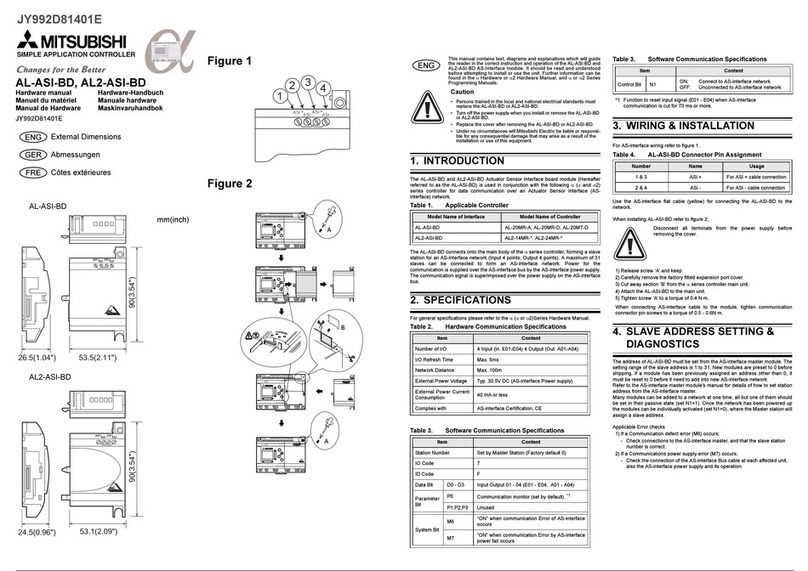
Mitsubishi
Mitsubishi AL-ASI-BD User manual
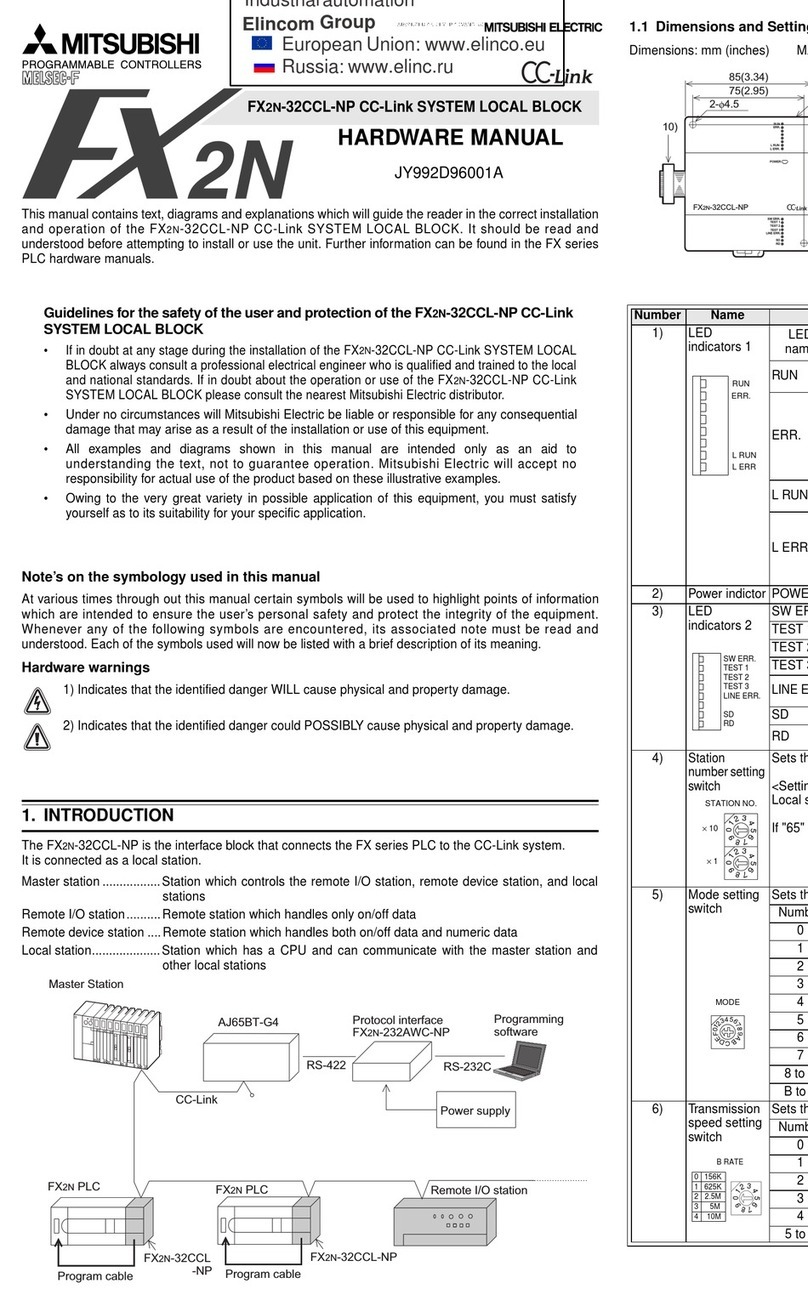
Mitsubishi
Mitsubishi FX2N-32CCL-NP User manual
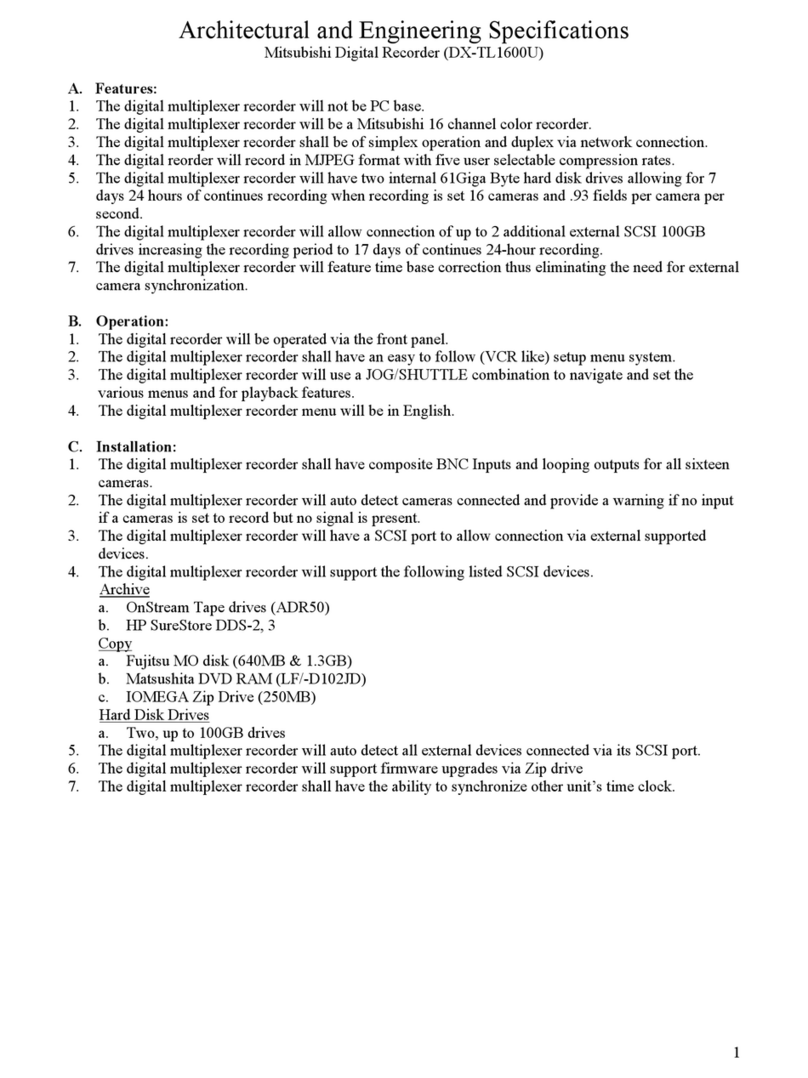
Mitsubishi
Mitsubishi DX-TL1600U User manual
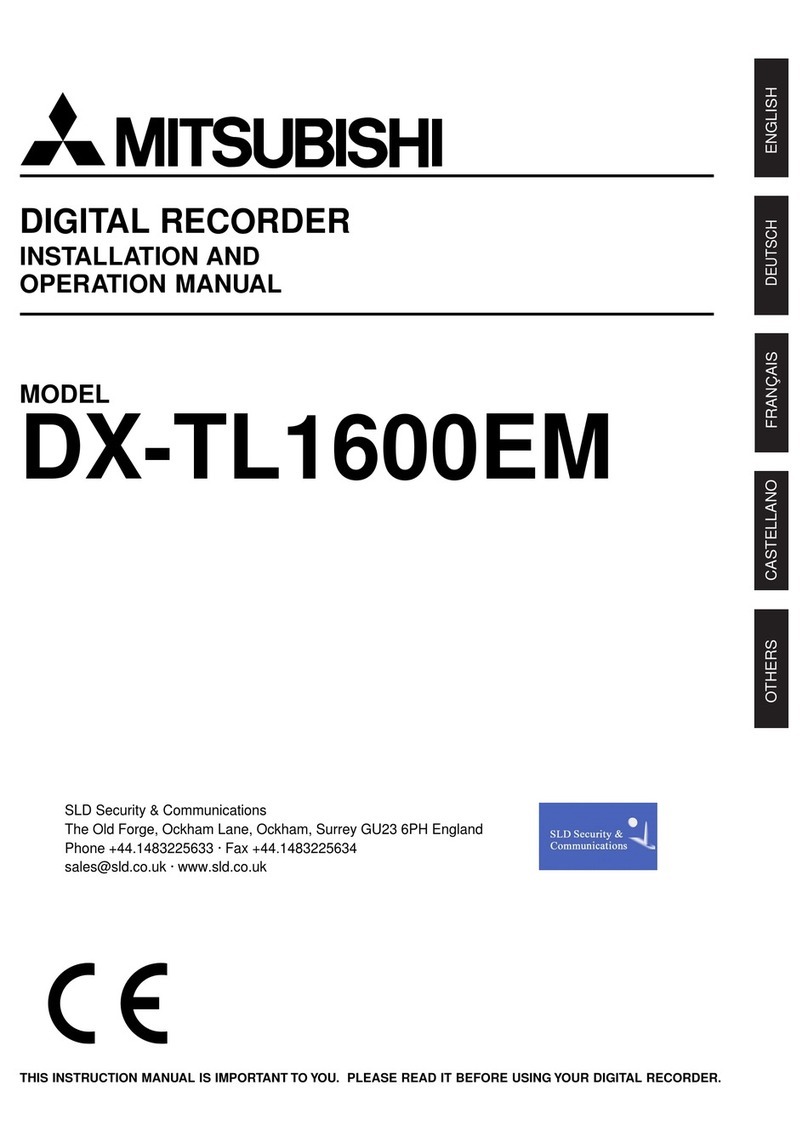
Mitsubishi
Mitsubishi DX-TL1600EM User manual
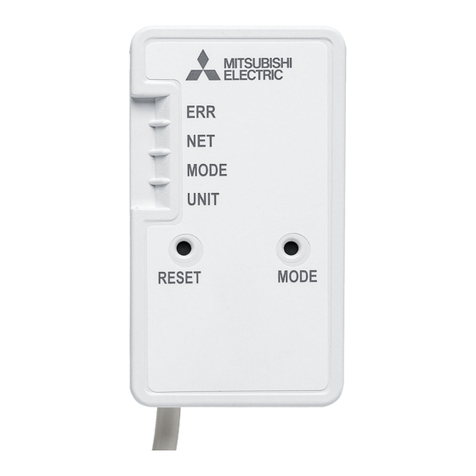
Mitsubishi
Mitsubishi MAC-568IF-E User manual
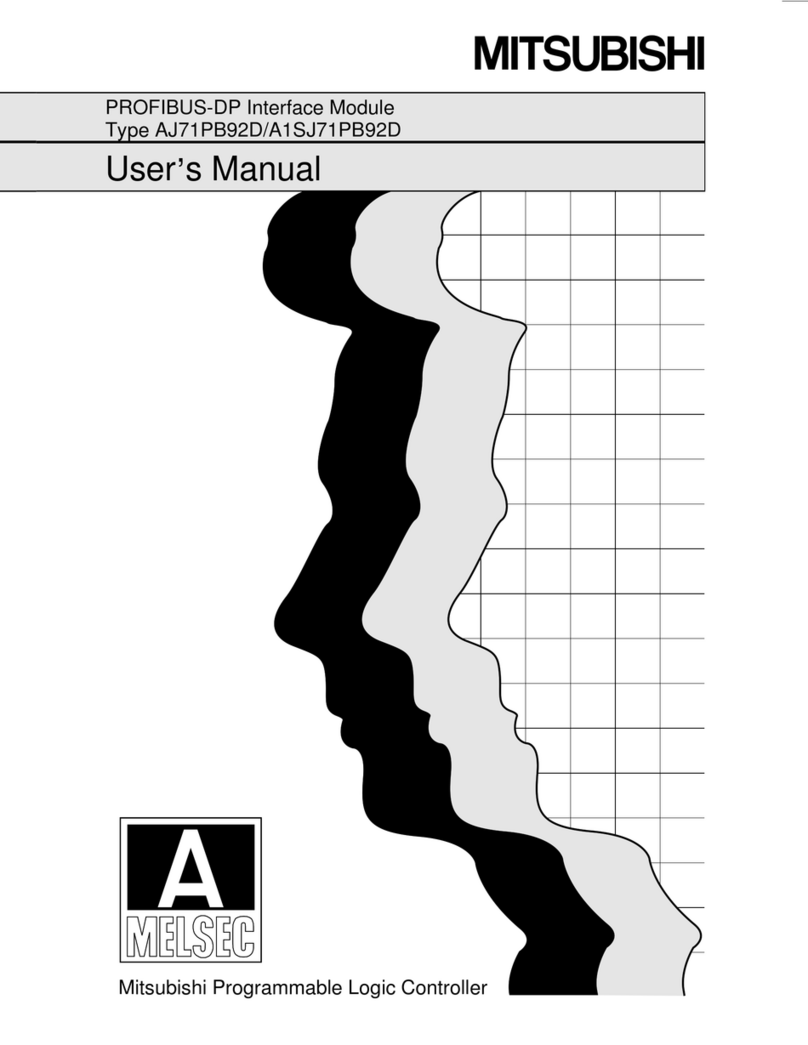
Mitsubishi
Mitsubishi A1SJ71PB92D User manual
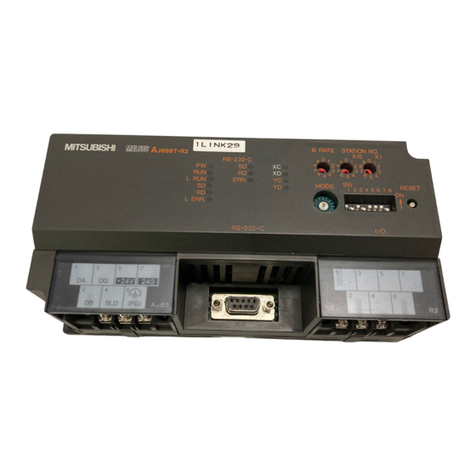
Mitsubishi
Mitsubishi AJ65BT-R2 User manual

Mitsubishi
Mitsubishi AJ71E71 User manual
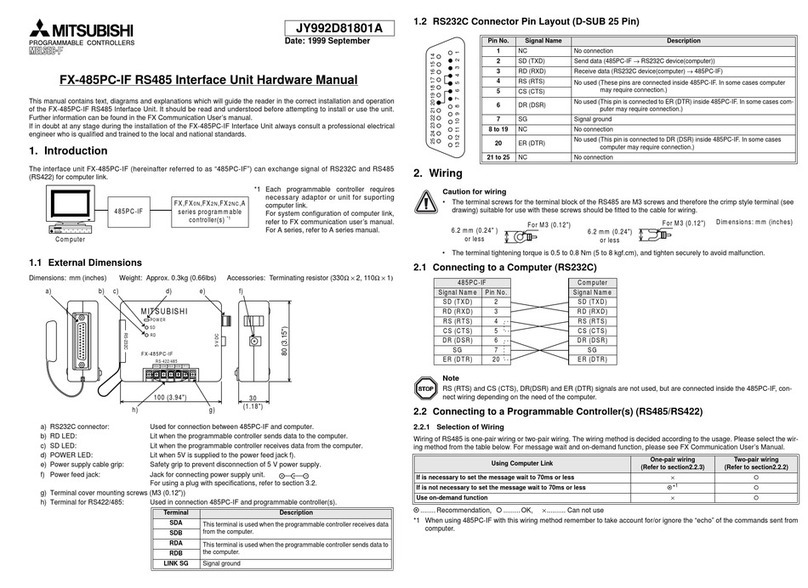
Mitsubishi
Mitsubishi FX-485PC-IF User manual
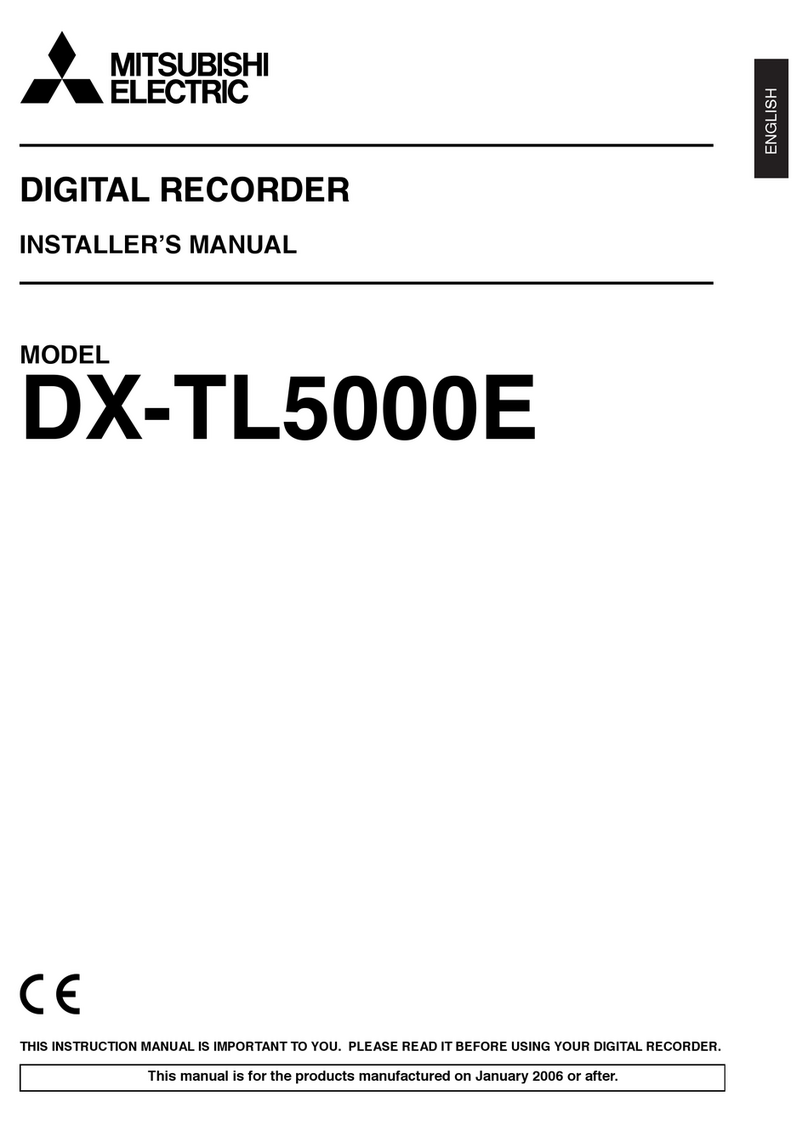
Mitsubishi
Mitsubishi DX-TL5000E series User guide
